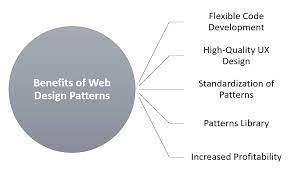Introduction
Design patterns play a pivotal role in software development, enhancing code quality and maintainability. What are the benefits of design patterns, and how do they benefit the development process? Let’s delve into the realm of design patterns and explore their significance in creating robust, scalable, and maintainable software solutions.
What are Design Patterns?
Design patterns are reusable solutions to common problems encountered in software design. They provide templates to solve recurring issues in a way that promotes code reusability, flexibility, and maintainability. These patterns encapsulate best practices and offer structured approaches to designing software systems.
Types of Design Patterns
Design patterns are categorized into three main types:
- Creational Patterns: These patterns focus on object creation mechanisms, providing flexibility in creating objects while ensuring they’re instantiated appropriately for a given scenario.
- Structural Patterns: Structural patterns deal with class and object composition, enabling the creation of larger structures while keeping them flexible and efficient.
- Behavioral Patterns: These patterns revolve around communication between objects, defining how they interact and distribute responsibilities.
Benefits of Design Patterns
Implementing design patterns yields numerous benefits, including:
- Code Reusability: Design patterns promote reusable code components, reducing redundancy and enhancing efficiency.
- Scalability: They facilitate the scalability of software systems, allowing for seamless expansion and modification.
- Maintainability: By providing organized and structured solutions, design patterns simplify maintenance tasks and future enhancements.
- Improved Collaboration: Design patterns offer a common language and framework, fostering better collaboration among development teams.
How Design Patterns Enhance Code Quality
Design patterns contribute significantly to elevating code quality by:
- Encouraging Best Practices: They embody proven solutions and industry best practices, ensuring a standardized approach to problem-solving.
- Facilitating Modularity: Patterns promote modular design, dividing complex systems into manageable, interconnected components.
- Enabling Flexibility: They make code more adaptable to change, reducing the impact of modifications on the entire system.
Implementing Design Patterns Effectively
To harness the full potential of design patterns:
- Understand the Problem: Identify the problem domain and choose the most suitable design pattern accordingly.
- Follow Design Principles: Adhere to SOLID principles and other design guidelines to complement pattern implementation.
- Document Patterns Used: Documenting implemented patterns aids in understanding and maintaining the codebase.
Conclusion
In conclusion, design patterns serve as a cornerstone in developing high-quality software systems. Their role in enhancing code quality, scalability, and maintainability cannot be overstated. Implementing these patterns empowers developers to build robust, adaptable solutions that meet evolving requirements. By leveraging design patterns, ON wave Group and other software development entities can unlock the full spectrum of benefits they offer, ensuring the creation of resilient and sustainable software solutions.

